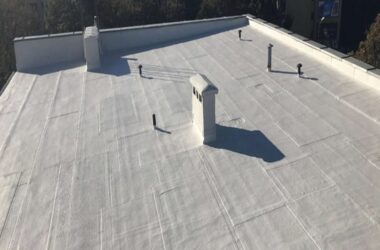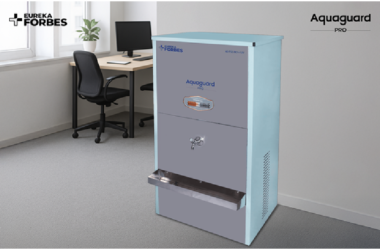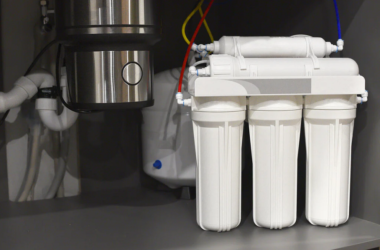In the fast-evolving world of construction, adopting innovative technologies can be the key to staying ahead of the curve. One such technology that has been making waves in the industry is slab scanning. Utilising advanced techniques to map out what’s beneath concrete surfaces, slab scanning uncovers hidden utilities, reinforcements, and potential hazards. This method employs high-frequency electromagnetic waves to create detailed images of the subsurface, allowing construction teams to identify and avoid obstacles that could impede progress or pose safety risks.
By providing a clear understanding of what lies beneath, slab scanning not only revolutionises how we approach construction projects but also ensures safer and more efficient workflows. Furthermore, this technology can lead to significant cost savings by preventing costly errors and delays, making it an invaluable tool for modern construction practices.
The Importance of Slab Scanning in Construction Projects
In an industry where precision and safety are paramount, slab scanning services have emerged as a game-changer. Its ability to provide detailed insights into subsurface conditions helps construction professionals make informed decisions, prevent costly mistakes, and optimise project timelines. By integrating slab scanning into your construction processes, you can significantly enhance the quality and reliability of your projects.
10 Compelling Reasons to Embrace Slab Scanning
1. Enhanced Safety Measures
One of the primary benefits of slab scanning is its contribution to workplace safety. By identifying hazards such as post-tension cables, electrical conduits, and other embedded objects, slab scanning helps avoid accidents during drilling, cutting, or coring activities. This proactive approach minimises the risk of injury to workers and ensures a safer construction environment.
2. Time and Cost Savings
Construction projects are notorious for their tight budgets and schedules. Slab scanning helps save both time and money by reducing the need for exploratory drilling and destructive testing. By providing accurate information about subsurface conditions, slab scanning allows for more precise planning and execution, ultimately leading to fewer delays and cost overruns.
3. Accuracy in Detecting Underground Utilities
One of the critical challenges in construction is accurately locating underground utilities. Slab scanning uses ground-penetrating radar (GPR) and other advanced technologies to detect and map out these utilities with high accuracy. This prevents accidental damage to essential services, such as water pipes and electrical lines, which could otherwise result in significant repair costs and project delays.
4. Environmental Benefits
Slab scanning is an environmentally friendly practice as it reduces the need for invasive exploration methods that can disturb the surrounding area. By minimising unnecessary excavation and drilling, slab scanning helps preserve the natural landscape and reduces the overall environmental impact of construction activities.
5. Avoiding Project Delays
Unexpected discoveries of hidden utilities or structural elements can lead to significant project delays. Slab scanning mitigates this risk by revealing these elements before construction begins. With a clear understanding of subsurface conditions, construction professionals can plan more effectively, avoid surprises, and keep the project on track.
6. Improving Project Planning and Design
Detailed insights from slab scanning enable better project planning and design. Architects and engineers can use this information to create more accurate and reliable designs, considering the existing subsurface conditions. This results in a smoother construction process and higher-quality final structures.
7. Compliance with Regulations
Adhering to building codes and regulations is crucial in construction. Slab scanning helps ensure compliance by providing accurate data on hidden utilities and structural elements. This information is essential for meeting regulatory requirements and avoiding potential legal issues down the line.
8. Minimising Damage to Existing Structures
Construction activities often involve working around existing structures. Slab scanning helps minimise the risk of damage to these structures by accurately mapping out their components. This ensures that drilling, cutting, or coring activities are carried out with precision, preserving the integrity of the existing buildings.
9. Enhancing Quality Control
Quality control is a critical aspect of any construction project. Slab scanning enhances quality control by providing detailed information about subsurface conditions. This allows for more precise construction activities, reducing the likelihood of errors and ensuring a higher standard of workmanship.
10. Future-Proofing Construction Projects
As construction projects become increasingly complex, future-proofing them is essential. Slab scanning provides a comprehensive record of subsurface conditions, which can be invaluable for future renovations, repairs, or expansions. This information helps ensure that future work is carried out safely and efficiently, without unnecessary disruptions.
Best Practices in Adopting and Using Slab Scanning Technology
To make the most of slab scanning technology, construction professionals should follow best practices, including:
- Partnering with Experienced Providers: Work with reputable slab scanning service providers who have a proven track record and expertise in the field.
- Integrating Scanning into Early Project Stages: Incorporate slab scanning into the early stages of project planning and design to maximise its benefits.
- Training and Education: Ensure that your team is well-trained in using slab scanning technology and interpreting the results accurately.
- Regular Updates and Maintenance: Stay updated with the latest advancements in slab scanning technology and ensure that your equipment is well-maintained for optimal performance.
The Future of Slab Scanning in Construction
The future of slab scanning looks promising, with continuous advancements in technology and increasing adoption across the industry. As construction projects become more sophisticated, the demand for accurate and reliable subsurface information will only grow. Innovations such as 3D scanning, artificial intelligence, and enhanced imaging techniques are set to further revolutionise slab scanning, making it an indispensable tool for construction professionals.
Conclusion
Slab scanning is more than just a technological advancement; it’s a vital tool that can transform how construction projects are planned, executed, and managed. This innovative technology allows for the precise detection of embedded objects within concrete structures, which is crucial for avoiding potential hazards and ensuring structural integrity. From enhancing safety measures to saving time and costs, the benefits of slab scanning are manifold. For instance, identifying hidden utilities and rebar can prevent costly mistakes and delays, while reducing the risk of accidents on-site. By embracing this technology, construction professionals can ensure higher-quality projects, compliance with regulations, and a safer working environment. Furthermore, slab scanning facilitates better project management through accurate data collection, leading to more informed decision-making and efficient resource allocation.





